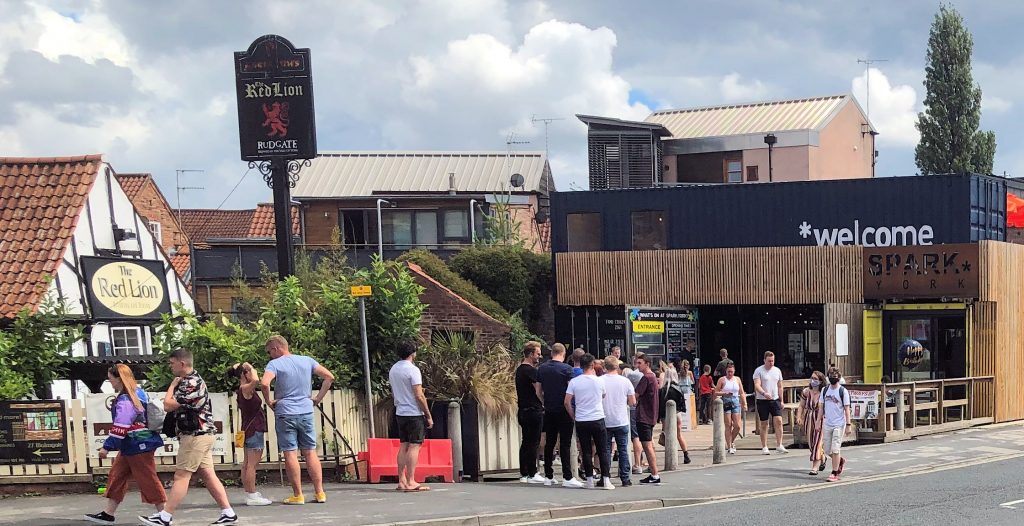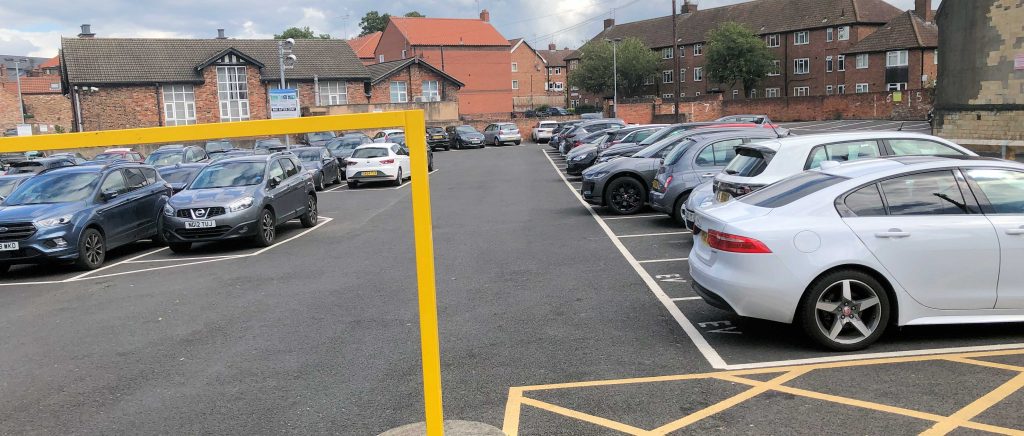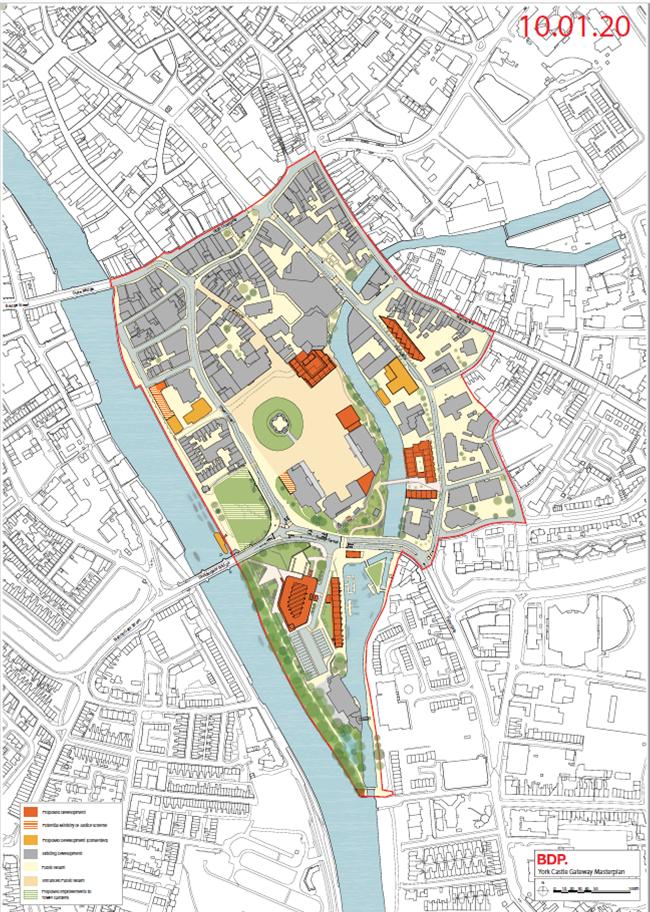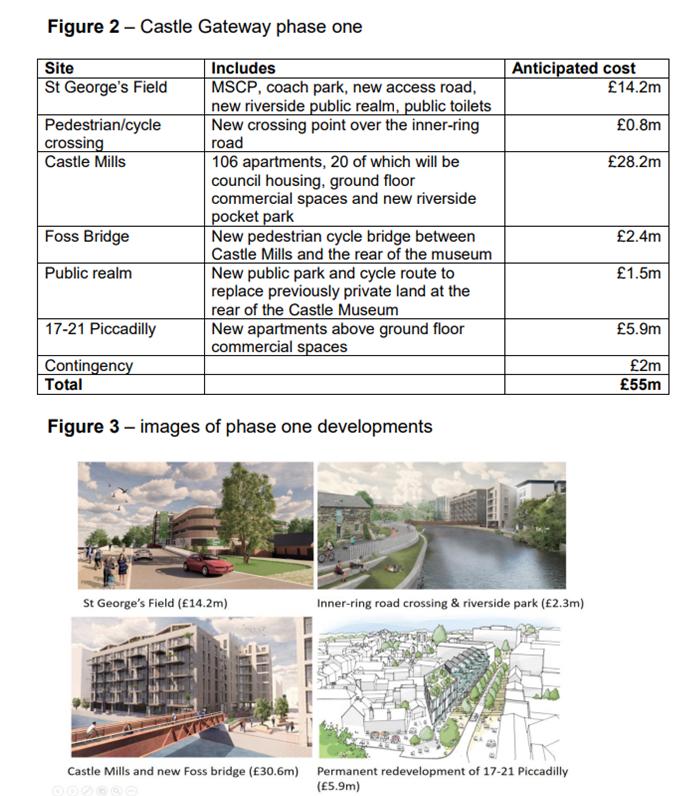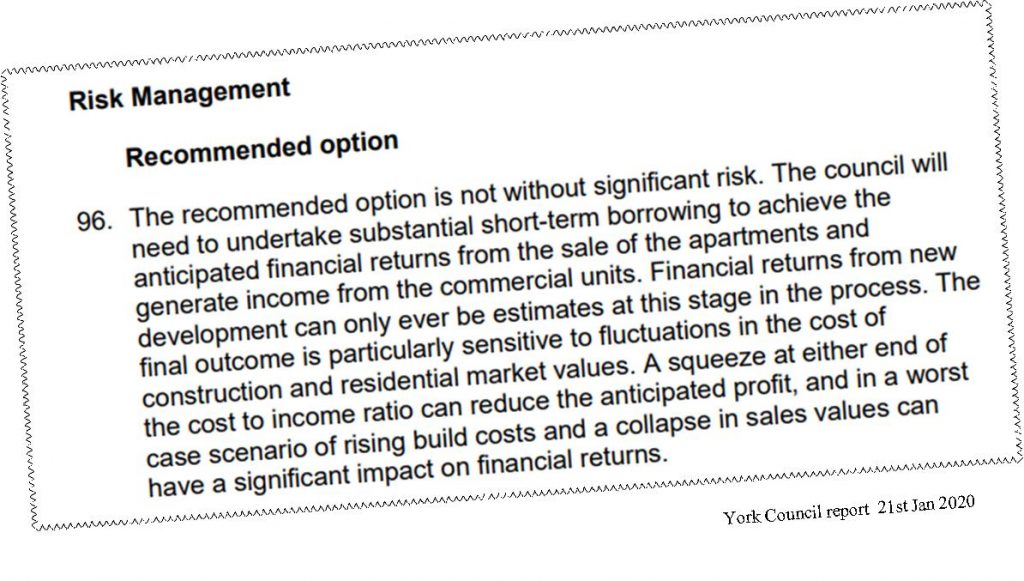…..but they might!
A report on the Castle Gateway regeneration project published today says that the scheme should go ahead but it says, “there are no plans to close Castle Car Park until suitable replacement parking is available”.
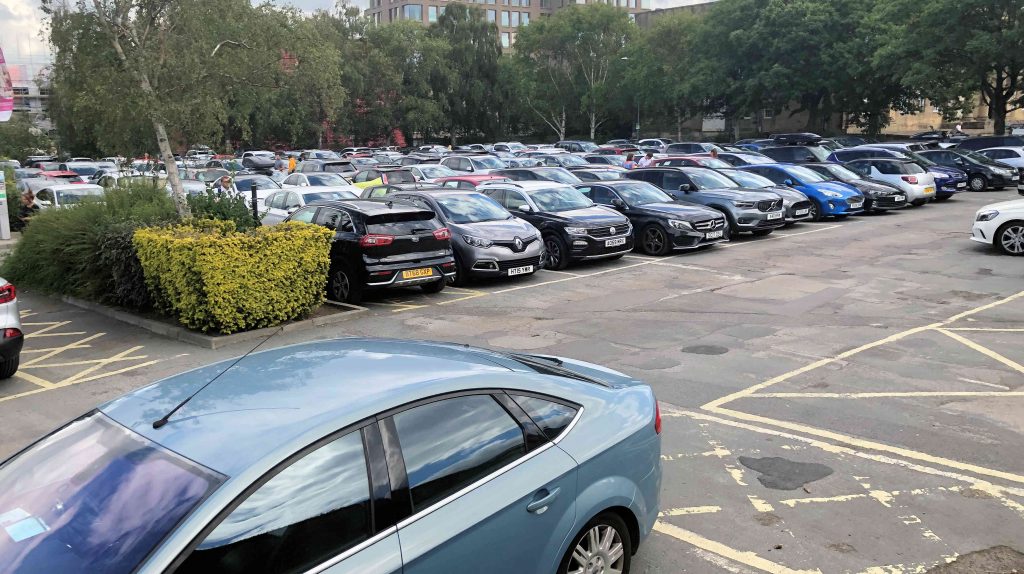
However, the construction of a multi-story alternative on the St George site will be shelved.
The Council’s Executive are being recommended to agree to the “recommencement of the paused procurement of a construction contractor to undertake the design and subsequent construction of the proposed apartments, pedestrian/cycle bridge and riverside park at Castle Mills”
They’re also being asked to approve the design and submission of planning applications for a “high quality public realm scheme on Castle Car Park and Eye of York” while a decision on the future of the site at 17-21 Piccadilly – currently the home of the Spark container village – will be delayed until next summer.
“Spark York who have resolved their outstanding planning issues and have a lease until early 2022″.
York Council report 24th Sept 2020
The immediate additional financial commitment for the Council will be £1.5 million. In total the project cost – which was to be funded by borrowing – was £46 million. This would generate additional interest payments of around £1 million per year which would have to come out of what is now an overcommitted revenue budget.
In effect, there will be further cuts in public service standards across the City.
It was hoped that the borrowing would be paid off through the sale of flats which would be built on the former Castle Mills car park site. However, there was still a funding deficit of £4.7 million and no resources were allocated for turning the Castle car park into “a world class open space”.
The Castle car park provides over £1 million a year in income for the Council.
The Council has already spent £2.2 million on consultation and design activities for the project.

The report fails to put the scheme costs into the context of the overall Council capital and revenue budget position.
An oddly detached from reality section of the report claims that the “Castle Gateway masterplan is a “significant opportunity to drive the city’s response to Covid-19 due to the:
- Focus on sustainable transport to create new key pedestrian and cycle routes
- Reduction of vehicle journeys inside the inner ring road through the closure of Castle car park
- Creation of significant new public realm
- Enhanced cultural and heritage offer and the creation of a new major event space – building on the city’s unique selling points and expanding the capacity to attract responsible tourism to support the city’s economy
- Regeneration and investment in rundown parts of the city Development of new city centre homes, including new affordable and council housing
- Capacity to reinvigorate the economy by supporting jobs in the construction sector”
So we have the Benito Mussolini solution to unemployment emerging. Borrowing to fund massive public works contracts which – in the case of the bridge and park – will have no short-term economic benefits (other than perhaps for a handful of the green socialist, city centre dwelling, elite).
Businesses dependent on those who choose to use, because of the health crisis, personal transport when they visit the City, will lose out.
We need to be careful with our commentary.
“El Duce” gained a reputation for having errant stationmasters shot if trains didn’t run on time.
The lowest risk part of the scheme maybe the construction of the blocks of flats. Maybe that could continue, even though rising unemployment, and reducing business rate income, could compromise the Council’s ability to service the planned borrowing.
On balance, the Council really should decide to pause the project for 18 months and review it when the health crisis is over.
To do anything else could be very risky.

